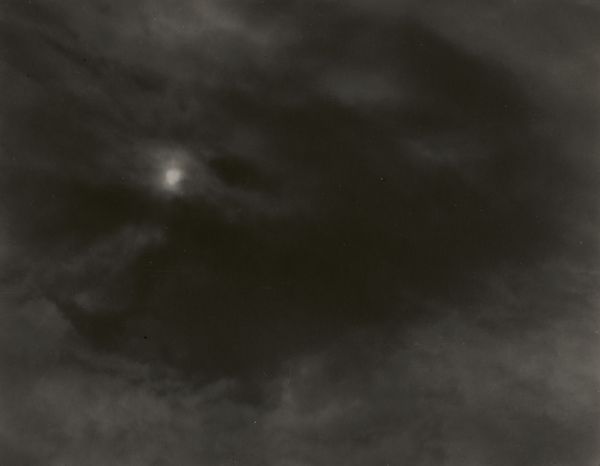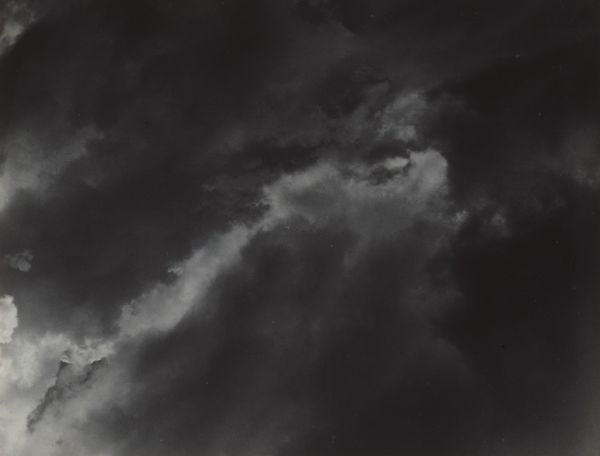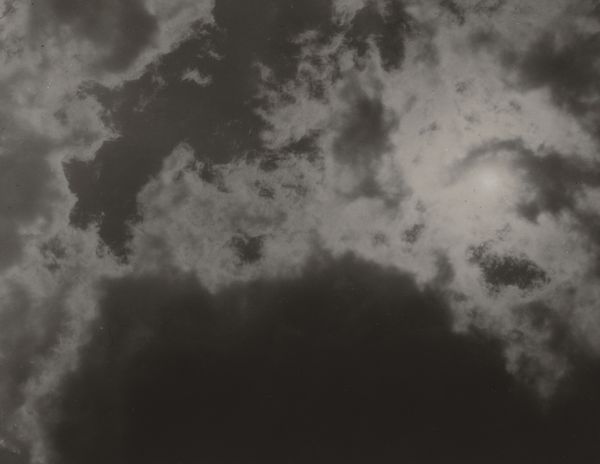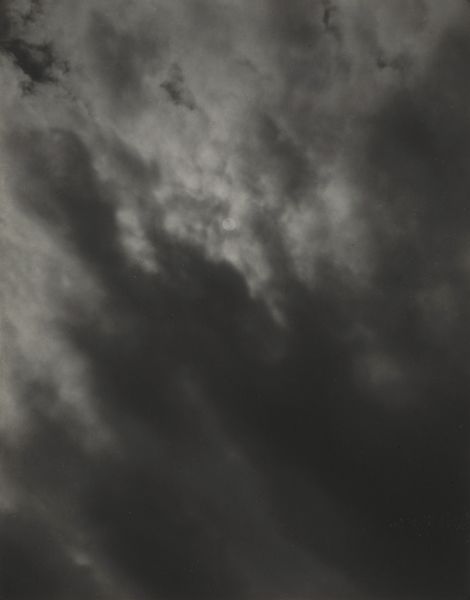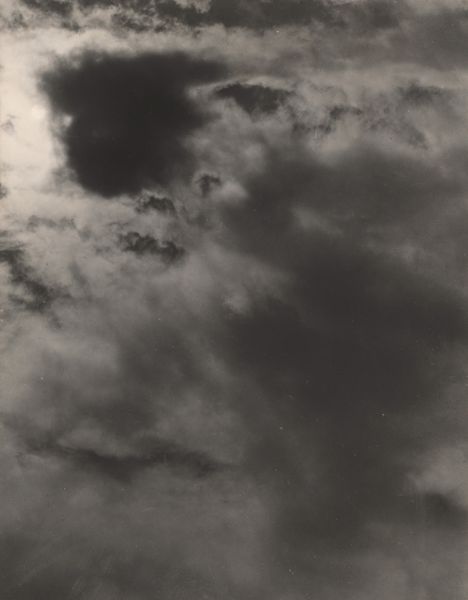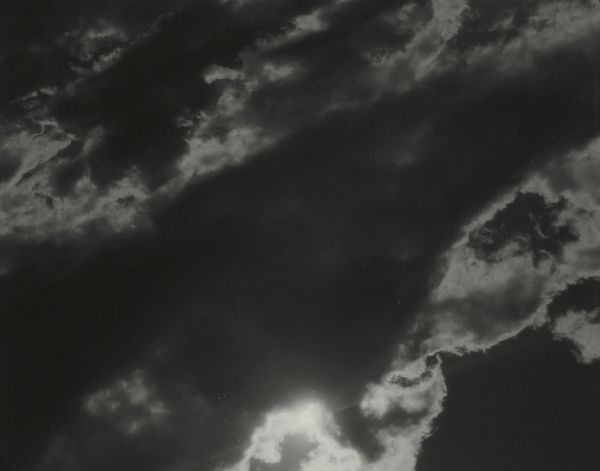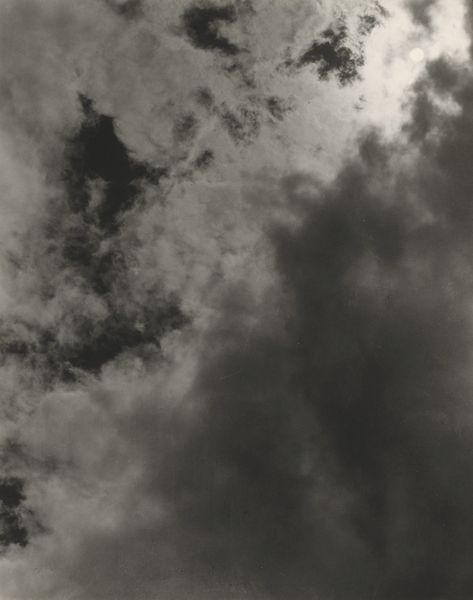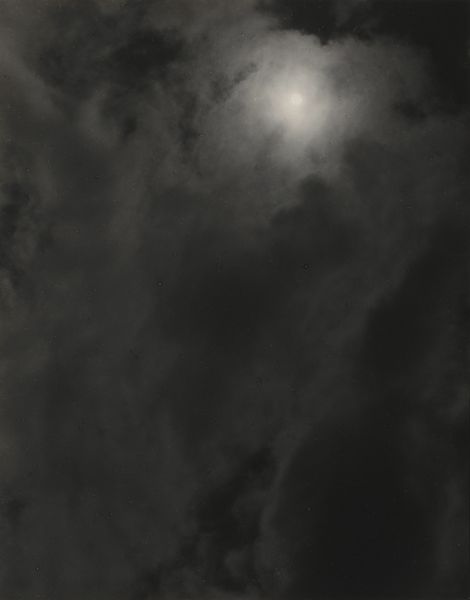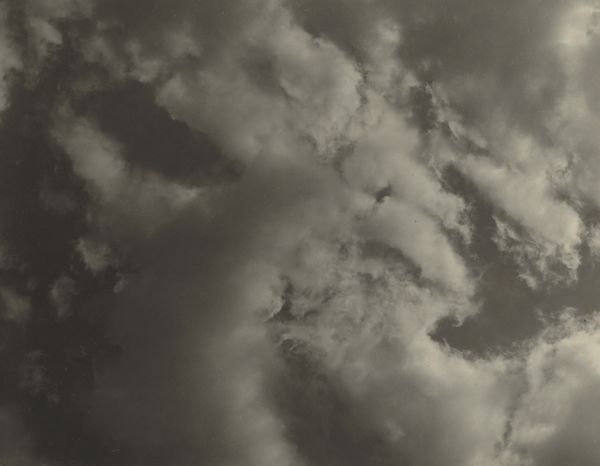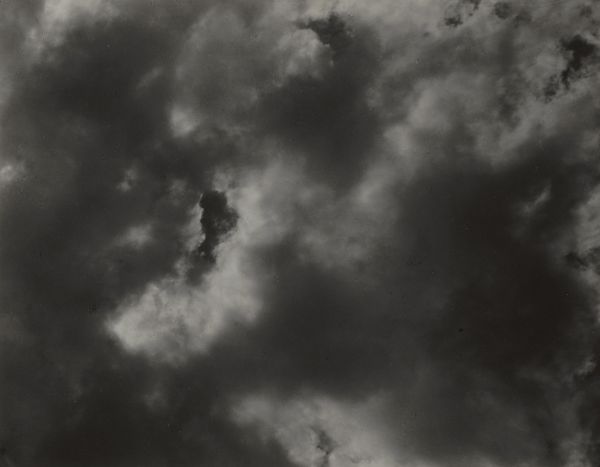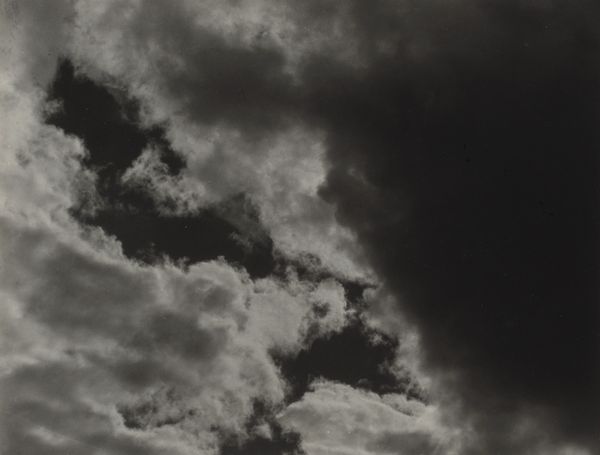
#
cloudy
#
twilight
#
natural shape and form
#
snowscape
#
low atmospheric-weather contrast
#
monochrome photography
#
gloomy
#
fog
#
mist
#
shadow overcast
Dimensions: sheet (trimmed to image): 9.2 x 11.8 cm (3 5/8 x 4 5/8 in.) mount: 34.2 x 27.6 cm (13 7/16 x 10 7/8 in.)
Copyright: National Gallery of Art: CC0 1.0
Editor: Alfred Stieglitz created "Songs of the Sky or Equivalent" between 1923 and 1927, a rather somber black and white photograph. The clouds fill the frame, possessing a striking range of grey tones. How do you interpret the formal elements at play here? Curator: Formally, Stieglitz presents a fascinating study in tonal gradation and texture. Note the placement of the single brightest point, seemingly the sun struggling to penetrate the cloud cover, slightly off-center, which introduces a subtle asymmetry. The velvety texture of the clouds contrasts sharply with the few, almost star-like pinpricks of light. Editor: So, it's all about the play of light and shadow? Curator: Precisely. The structural arrangement leads the eye across the picture plane, inviting a contemplation on the relationship between light, dark, and form itself. Stieglitz uses the chemical process of photography to abstract natural phenomena into a study of pure aesthetics. He asks, "What does it mean to see and represent?" Editor: Do you think the title influences how we perceive these formal qualities? Curator: Undoubtedly. The addition of "Songs," connects the visual with the auditory, asking if form itself might suggest a certain melody or harmony. Furthermore, consider "Equivalent." Stieglitz challenges the photograph as mere representation, asserting it as an object equal to a feeling or thought. Editor: I see. By reducing the landscape to light and shadow, it's less about clouds and more about something else entirely. Thanks for helping me understand the artistic structure, rather than only subject matter. Curator: Indeed, understanding structure is pivotal to unlocking artwork, enabling appreciation through its innate properties.
Comments
No comments
Be the first to comment and join the conversation on the ultimate creative platform.
